For US Healthcare Professionals only
PRESCRIBINGINFORMATION REQUEST
SAMPLES

NUZYRA is indicated for the treatment of Community-Acquired Bacterial Pneumonia (CABP) and Acute Bacterial Skin and Skin Structure Infections (ABSSSI) in adults caused by select susceptible microorganisms.

REAL-WORLD RESULTS IN CABP
Patient hospitalized with CABP successfully treated with NUZYRA
SCROLL TO EXPLORE PATIENT’S TREATMENT JOURNEY

CLINICALLY CURED* AFTER A SINGLE COURSE OF TREATMENT1
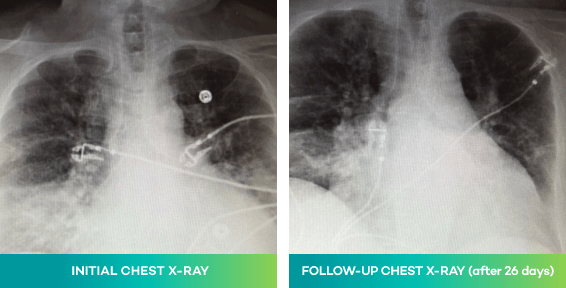
The following case study reflects a real
*Clinical cure at the post-treatment evaluation was defined as survival and improvement in signs and symptoms of
CABP, based on the clinician’s judgment, to the extent that further antibacterial therapy is not necessary.1

SYMPTOMS
2-DAY HISTORY OF COUGH AND SHORTNESS OF BREATH
PATIENT IS ADMITTED TO THE EMERGENCY ROOM
AND GIVEN 1 DOSE OF LEVOFLOXACIN;
BLOOD CULTURES ARE OBTAINED

Physical exam findings

68-year-old female
2-day history of cough and shortness of breath
VITALS
- Temperature: 101.2°F
- O2 Saturation: 77% on room air
- Prolonged QTc

Medical history
CKD stage 4
Type 2 diabetes
Mild cognitive impairment
Tobacco use
Current medications

- Allopurinol
- Donepezil
- Amlodipine
- Gabapentin
- Atorvastatin
- Insulin lispro
- Carvedilol
- Ondansetron
- Hydralazine
- Ranitidine
- Losartan
- Furosemide
- Tizanidine
- Darbepoetin alfa
- Tramadol

Lab and imaging assessments
Blood cultures obtained before starting on levofloxacin IV
Creatinine 3.3 (baseline 2.8)
Respiratory Viral Panel
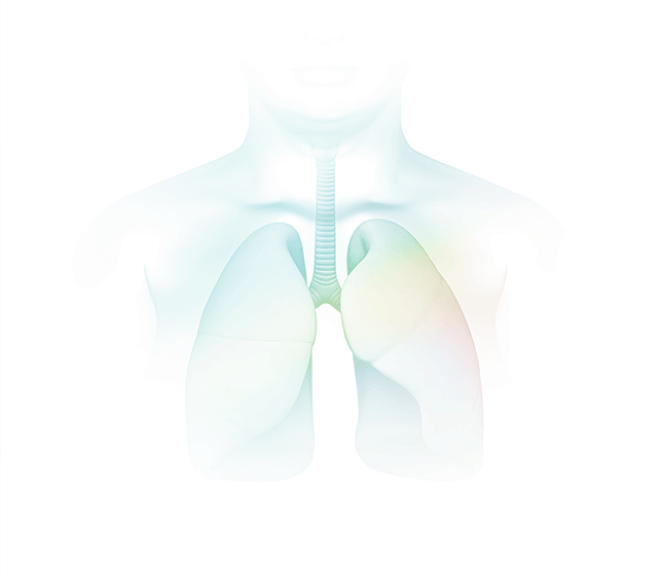
DIAGNOSIS
COMMUNITY-ACQUIRED BACTERIAL PNEUMONIA;
CHEST X-RAY REVEALED BIBASILAR OPACITIES WITH
L>R CONCERNING FOR PNEUMONIA

Switched to piperacillin-tazobactam
for broader coverage in case of
aspiration pneumonia
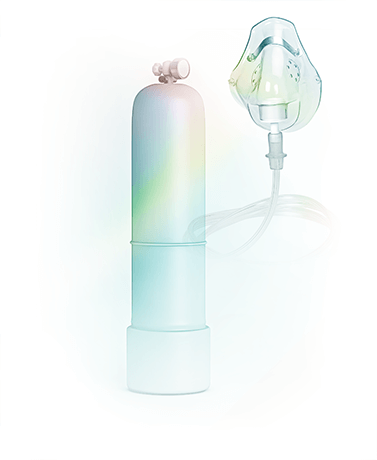
Still hospitalized after 3 days,
patient was extremely weak and
required 02 at 3-4 L/min
Unable to be discharged home,
patient was accepted to a skilled
nursing facility (SNF)
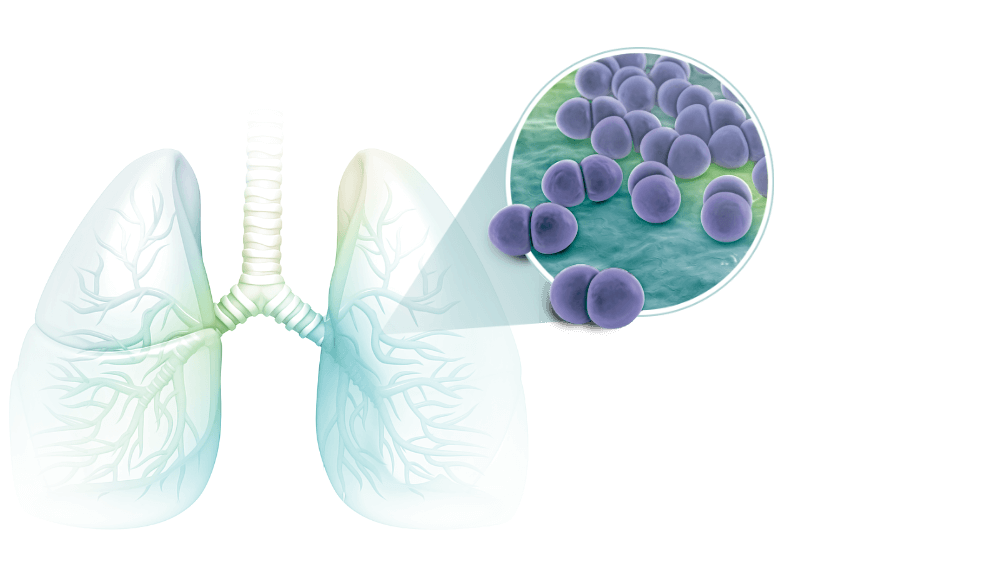
Decision to treat superimposed
bacterial pneumonia made after no
appreciable improvement in
respiratory status and equivocal CXR
PATIENT WAS PRESCRIBED ORAL NUZYRA
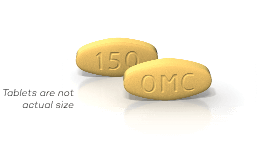
LOADING DOSE
300 mg twice on Day 4 of hospital stay1
Why NUZYRA is appropriate
Patient has CKD stage 4
NUZYRA does not require a dose adjustment for renal impairment2
Patient takes multiple medications
NUZYRA has limited drug-drug interactions2
NUZYRA is not expected to interact with drugs metabolized by cytochrome P450 enzymes
Patients on anticoagulant therapy may require downward adjustment of their anticoagulant dosage while taking NUZYRA
Absorption of oral tetracyclines is impaired by antacids containing aluminum, calcium, or magnesium, bismuth subsalicylate, and iron containing preparations
PATIENT WAS DISCHARGED FROM HOSPITAL TO SNF ON
ORAL, ONCE-DAILY NUZYRA1

ONCE-DAILY MAINTENANCE DOSE
NUZYRA 300 mg QD to complete
7 days of treatment with NUYZRA
RESULTS
CLINICALLY CURED* AFTER A SINGLE COURSE OF TREATMENT1
Follow-up x-ray after a single course of treatment.

The case study reflects a real
*Clinical cure at the post-treatment evaluation was defined as survival and improvement in signs and symptoms of
CABP, based on the clinician’s judgment, to the extent that further antibacterial therapy is not necessary.1
Ready to Prescribe
once-daily NUZYRA?
Have a question?
Ask a represenative.
View an additional real-world case study in CABP.
EXPLORE NOWNUZYRA® (omadacycline) is a tetracycline-class antibacterial indicated for the treatment of adult patients with the following infections caused by susceptible microorganisms:
Community-Acquired Bacterial Pneumonia (CABP) caused by the following:
Streptococcus pneumoniae, Staphylococcus aureus (methicillin-susceptible isolates), Haemophilus influenzae, Haemophilus parainfluenzae, Klebsiella pneumoniae, Legionella pneumophila, Mycoplasma pneumoniae, and Chlamydophila pneumoniae.
Acute Bacterial Skin and Skin Structure Infections (ABSSSI) caused by the following:
Staphylococcus aureus (methicillin-susceptible and -resistant isolates), Staphylococcus lugdunensis, Streptococcus pyogenes, Streptococcus anginosus grp. (includes S. anginosus, S. intermedius, and S. constellatus), Enterococcus faecalis, Enterobacter cloacae, and Klebsiella pneumoniae.
USAGE
To reduce the development of drug-resistant bacteria and maintain the effectiveness of NUZYRA and other antibacterial drugs, NUZYRA should be used only to treat or prevent infections that are proven or strongly suspected to be caused by susceptible bacteria.
IMPORTANT SAFETY INFORMATION
CONTRAINDICATIONS
NUZYRA is contraindicated in patients with known hypersensitivity to omadacycline or tetracycline-class antibacterial drugs, or to any of the excipients.
WARNINGS AND PRECAUTIONS
Mortality imbalance was observed in the CABP clinical trial with eight deaths (2%) occurring in patients treated with NUZYRA compared to four deaths (1%) in patients treated with moxifloxacin. The cause of the mortality imbalance has not been established. All deaths, in both treatment arms, occurred in patients > 65 years of age; most patients had multiple comorbidities. The causes of death varied and included worsening and/or complications of infection and underlying conditions. Closely monitor clinical response to therapy in CABP patients, particularly in those at higher risk for mortality.
The use of NUZYRA during tooth development (last half of pregnancy, infancy and childhood to the age of 8 years) may cause permanent discoloration of the teeth (yellow-gray-brown) and enamel hypoplasia.
The use of NUZYRA during the second and third trimester of pregnancy, infancy and childhood up to the age of 8 years may cause reversible inhibition of bone growth.
Hypersensitivity reactions have been reported with NUZYRA. Life-threatening hypersensitivity (anaphylactic) reactions have been reported with other tetracycline-class antibacterial drugs. NUZYRA is structurally similar to other tetracycline-class antibacterial drugs and is contraindicated in patients with known hypersensitivity to tetracycline-class antibacterial drugs. Discontinue NUZYRA if an allergic reaction occurs.
Clostridioides difficile associated diarrhea (CDAD) has been reported with use of nearly all antibacterial agents and may range in severity from mild diarrhea to fatal colitis. Evaluate if diarrhea occurs.
NUZYRA is structurally similar to tetracycline-class antibacterial drugs and may have similar adverse reactions. Adverse reactions, including photosensitivity, fixed drug eruption, pseudotumor cerebri, and anti-anabolic action (which has led to increased BUN, azotemia, acidosis, hyperphosphatemia, pancreatitis, and abnormal liver function tests), have been reported for other tetracycline-class antibacterial drugs, and may occur with NUZYRA. Discontinue NUZYRA if any of these adverse reactions are suspected.
Prescribing NUZYRA in the absence of a proven or strongly suspected bacterial infection is unlikely to provide benefit to the patient and increases the risk of the development of drug-resistant bacteria.
ADVERSE REACTIONS
The most common adverse reactions (incidence ≥2%) are nausea, vomiting, infusion site reactions, alanine aminotransferase increased, aspartate aminotransferase increased, gamma-glutamyl transferase increased, hypertension, headache, diarrhea, insomnia, and constipation.
DRUG INTERACTIONS
Patients who are on anticoagulant therapy may require downward adjustment of their anticoagulant dosage while taking NUZYRA.
Absorption of tetracyclines, including NUZYRA is impaired by antacids containing aluminum, calcium, or magnesium, bismuth subsalicylate and iron containing preparations.
USE IN SPECIFIC POPULATIONS
Lactation: Breastfeeding is not recommended during treatment with NUZYRA.
Please see Full Prescribing Information for NUZYRA.
References:
- NUZYRA [Prescribing Information]. Paratek Pharmaceuticals, Inc.
- Data on file. Paratek Pharmaceuticals, Inc.